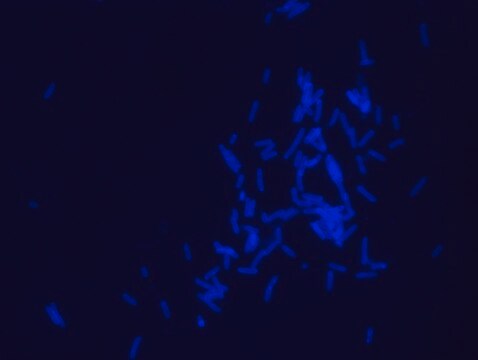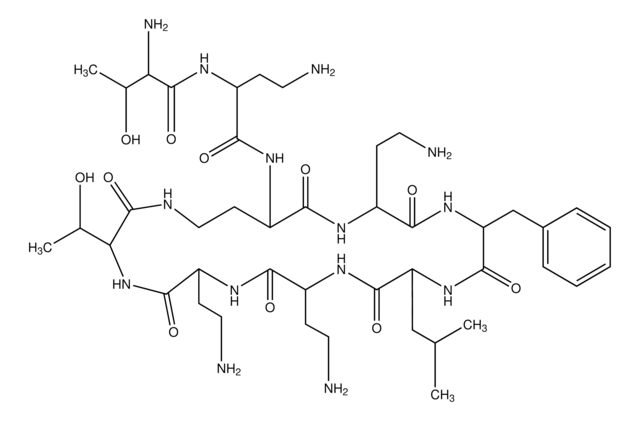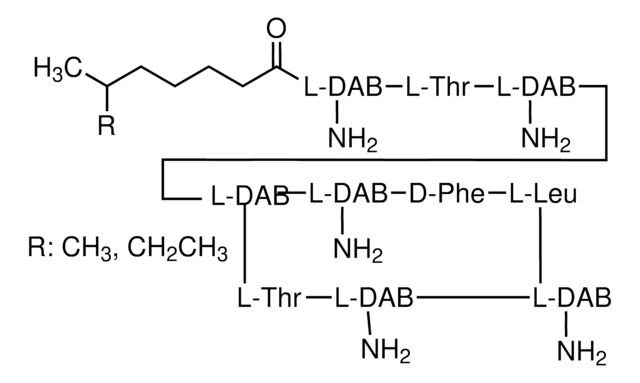G1424
Globomycin from Streptomyces hagronensis
Synonyme(s) :
Globomycin, Glycine, N-(N-(N-(N-(N-(3-hydroxy-2-methyl-1-oxononyl)-N-methylleucyl)-L-alloisoleucyl)-L-seryl)-L-allothreonyl)-, rho-lactone, SF 1902
About This Item
Produits recommandés
Source biologique
Streptomyces hagronensis
Niveau de qualité
Pureté
≥98% (HPLC)
Forme
powder
Couleur
white
Solubilité
DMSO: 1 mg/mL
Spectre d'activité de l'antibiotique
Gram-negative bacteria
Mode d’action
enzyme | inhibits
Température de stockage
−20°C
−20°C
InChI
1S/C32H57N5O9/c1-9-11-12-13-14-24-20(6)32(45)37(8)23(15-18(3)4)29(42)35-26(19(5)10-2)31(44)34-22(17-38)28(41)36-27(21(7)39)30(43)33-16-25(40)46-24/h18-24,26-27,38-39H,9-17H2,1-8H3,(H,33,43)(H,34,44)(H,35,42)(H,36,41)
Clé InChI
VFGBXFZXJAWPOE-UHFFFAOYSA-N
Description générale
Application
- Globomycin, a new peptide antibiotic with spheroplast-forming activity. I. Taxonomy of producing organisms and fermentation.: This study explores the taxonomy of the producing organisms of Globomycin and details the fermentation processes involved. This antibiotic shows spheroplast-forming activity, indicating its potential application in targeting bacterial cell wall synthesis (Inukai et al., 1978).
Actions biochimiques/physiologiques
Code de la classe de stockage
11 - Combustible Solids
Classe de danger pour l'eau (WGK)
WGK 3
Point d'éclair (°F)
Not applicable
Point d'éclair (°C)
Not applicable
Certificats d'analyse (COA)
Recherchez un Certificats d'analyse (COA) en saisissant le numéro de lot du produit. Les numéros de lot figurent sur l'étiquette du produit après les mots "Lot" ou "Batch".
Déjà en possession de ce produit ?
Retrouvez la documentation relative aux produits que vous avez récemment achetés dans la Bibliothèque de documents.
Notre équipe de scientifiques dispose d'une expérience dans tous les secteurs de la recherche, notamment en sciences de la vie, science des matériaux, synthèse chimique, chromatographie, analyse et dans de nombreux autres domaines..
Contacter notre Service technique






